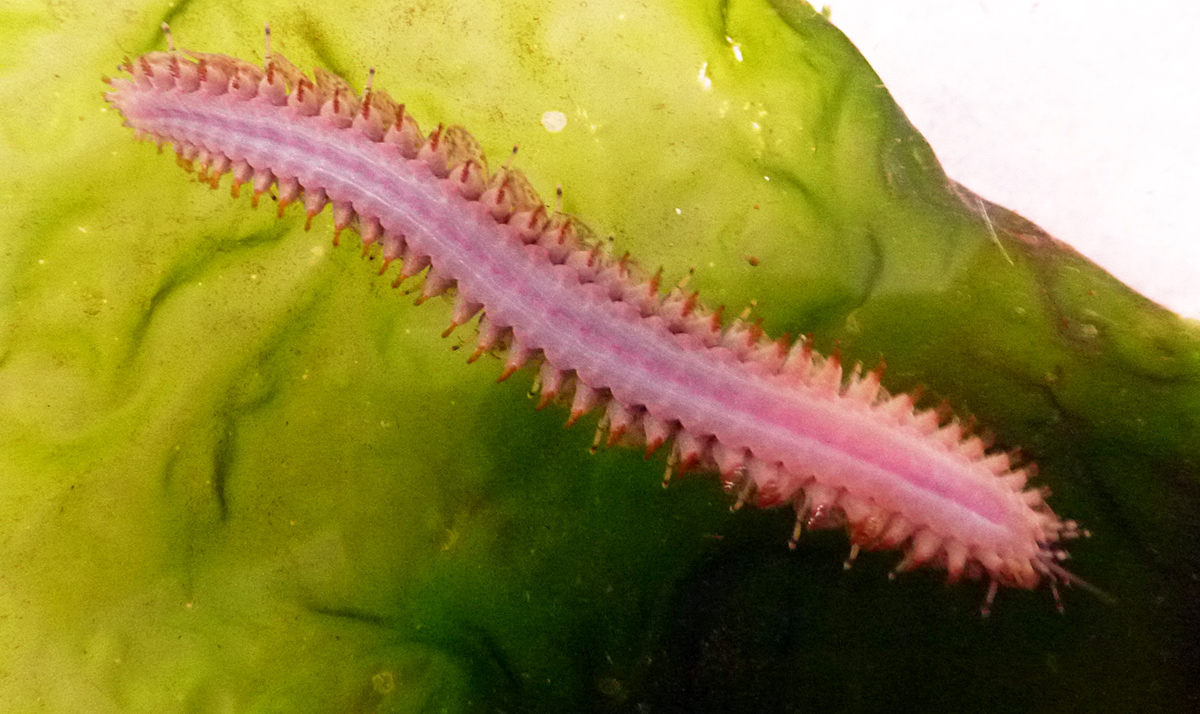Author: Theodore Jack
Common name: Eighteen-scaled Worm, armoured scale-worm, common scale worm.
Scientific name: Halosydna brevistosa
Size range: It can grow up to 11 cm in symbiotic relationships, but is normally around 2 cm in length.
Identifying features: The Eighteen-scaled Worm is the only worm with 18 pairs of elytra (scales). Each of its shield-shaped scales often has “eye dots” or black or white dots in the middle. Also, it often has shorter bristles on the top side of its body and longer ones on the bottom sides.


Habitat: They can be found on rocky areas in low tidal zones down to 270 m deep. They can be found from Alaska to Northern Mexico.
Food: When found in a commensal relationship with the hooded nudibranch, the 18-scaled worm often feeds on the nudibranch’s fecal pellets. If solitary, it will hunt other worms or the detritus of the sea floor.
Life cycle: When an 18-scaled worm wants to reproduce, it has to find a scale worm of the opposite gender. A female 18-scaled worm often starts this by releasing a pheromone that tells nearby males that they are ready to reproduce. When they have found each other, they mate via a method called swarming, where they both release their gametes into the water around them, where the sperm can fertilize the eggs. These fertilized eggs then float around until the larva settles onto the ocean floor at around 0.9 mm.
References
Cowles, D. (2018, Autumn). Halosydna brevisetosa. Salish Sea Invertebrates. https://inverts.wallawalla.edu/Annelida/Polynoidae/Halosydna_brevisetosa.html
Lamb, A., Byers, S. C., Hanby, B. P., & Hawkes, M. W. (2009). Marine Life of the Pacific Northwest: A photographic encyclopedia of invertebrates, Seaweeds and selected fishes. Harbour Publ.
Sept, J. D. (2019). The new beachcomber’s guide to the Pacific Northwest: Completely revised and expanded 2019. Harbour Publishing.
Ross, H. (2024, May 27). Antarctic Scale Worm. A-Z Animals. https://a-z-animals.com/animals/antarctic-scale-worm/#:~:text=Females%20attract%20males%20by%20producing,This%20process%20is%20called%20swarming.

